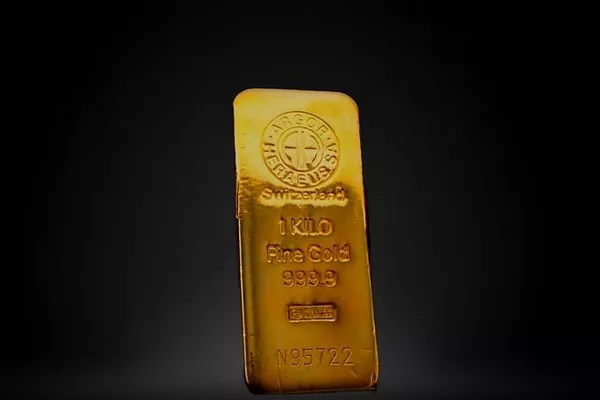Gold has always held a significant place in the world economy, serving as both a safe-haven asset and a valuable commodity. Understanding its historical price movements offers insight into market trends and economic conditions. This article explores the price of gold in 1988, examining the factors that influenced its valuation that year, its fluctuations, and the broader economic context. Whether you’re an investor, historian, or simply curious, this comprehensive overview will enhance your understanding of gold’s value in 1988.
Gold’s Historical Context
The Role of Gold in the Economy
Gold has been prized throughout history for its rarity, beauty, and intrinsic value. It is often viewed as a hedge against inflation and economic uncertainty. By the late 20th century, gold was widely traded on international markets, and its price was influenced by various economic indicators, geopolitical events, and shifts in investor sentiment.
The Economic Landscape of the 1980s
The 1980s were marked by significant economic changes, including:
High Inflation: The late 1970s and early 1980s experienced rampant inflation in the United States, prompting many investors to turn to gold as a store of value.
Monetary Policy: The Federal Reserve, under Chairman Paul Volcker, implemented tight monetary policies to combat inflation, resulting in high interest rates and a strong dollar.
Geopolitical Tensions: Events such as the Cold War and regional conflicts influenced market stability, often driving investors towards gold as a safe-haven asset.
Gold Prices in 1988
Annual Average Prices
In 1988, the average price of gold was approximately $433.55 per ounce. This represented a decline from the previous year’s high, reflecting changes in market dynamics and investor behavior. The following sections will detail the price fluctuations throughout the year.
Monthly Price Breakdown
January: The year began with gold priced around $426.50 per ounce, influenced by seasonal demand and economic forecasts.
February: Prices saw a slight increase, reaching approximately $434.00 per ounce as inflation concerns persisted.
March: Gold prices peaked at around $438.00 per ounce, reflecting continued investor interest amid geopolitical uncertainties.
April to June: Prices fluctuated between $420 and $430 per ounce, as market conditions stabilized and the dollar strengthened.
July: A notable drop occurred, with gold prices falling to about $400.00 per ounce due to a decrease in inflation fears and rising interest rates.
August to October: Prices recovered slightly, averaging around $420.00 per ounce, as global economic conditions remained volatile.
November: Prices dipped again, reaching approximately $385.00 per ounce, influenced by a strengthening dollar and declining demand.
December: The year closed with gold prices averaging around $400.00 per ounce, marking a turbulent but ultimately stable year.
Key Price Influencers
Several factors influenced gold prices in 1988:
Economic Indicators: Reports on inflation rates, unemployment, and consumer confidence significantly impacted investor sentiment towards gold.
Interest Rates: The Federal Reserve’s policies on interest rates directly influenced gold prices. Higher interest rates generally led to lower gold prices as they strengthened the dollar.
Geopolitical Events: Events like the Iran-Iraq War and tensions in Eastern Europe contributed to fluctuations in gold prices, as investors sought safety in precious metals during uncertain times.
Comparison with Previous Years
Gold Prices in the 1980s
To understand the price of gold in 1988, it’s essential to compare it with previous years:
1980: Gold prices soared to an unprecedented average of $615.00 per ounce due to the economic turmoil and high inflation rates.
1981-1983: Following the peak, prices fell significantly, averaging around $300.00 to $400.00 per ounce as inflation subsided and the dollar strengthened.
1984-1987: Gold prices remained relatively stable, hovering around $400.00 per ounce, until the gradual increase leading up to 1988.
Price Trends in the Late 1980s
The decline in gold prices in 1988 marked a shift from the inflation-driven rally of the late 1970s and early 1980s. The stabilization of the economy, coupled with increasing interest rates, led to a new market reality for gold.
Investing in Gold: Lessons from 1988
Volatility and Risk
The price movements of gold in 1988 illustrate the inherent volatility and risk associated with investing in precious metals. Investors must remain vigilant and consider various economic indicators that could influence gold prices.
Long-Term Value
Despite short-term fluctuations, gold has historically maintained its value over the long term. Understanding historical price trends can help investors make informed decisions about when to buy or sell.
Diversification Strategy
Gold often serves as a hedge against inflation and economic uncertainty. Including gold in an investment portfolio can provide diversification benefits, especially during periods of economic instability.
Conclusion
The price of gold in 1988 reflects a complex interplay of economic conditions, geopolitical factors, and market sentiment. With an average price of approximately $433.55 per ounce, the year marked a period of adjustment following the inflation-driven peaks of the late 1970s and early 1980s. Understanding the historical context and price movements of gold can provide valuable insights for investors and enthusiasts alike. As we continue to navigate economic uncertainties, gold remains a critical asset for preserving wealth and navigating market fluctuations.
Related topics:
- The Price of Gold in 1987: A Historical Review
- The Price of Gold in 1986: A Historical Perspective
- Gold Prices in 1985: A Historical Overview


